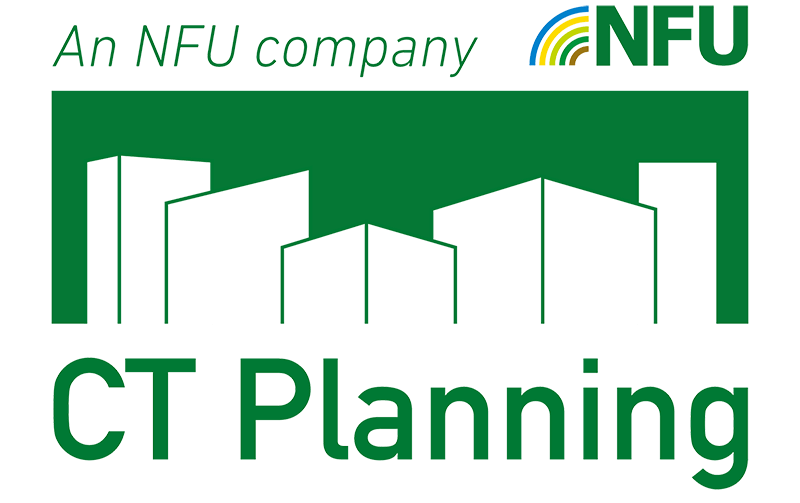Changes to Agricultural Permitted Development Rights
On May 21, 2024, significant changes to permitted development rights for agricultural buildings will come into effect, marking another milestone in rural development policy. These changes proceed the initial amendments proposed by the Department for Levelling Up, Housing and Communities (DLUHC).
These modifications relate to the expansion of Class Q and R permitted development rights, which govern the conversion of agricultural structures into residential dwellings and commercial units, alongside significant alterations to Part 6, which oversees traditional agricultural permitted development rights. With the consultation process concluded this article aims to clarify the forthcoming updates and their benefits, and implications:
Changes to Class Q:
- Increased Dwellings: Previously, one agricultural unit could be converted to five small dwellings or three large homes with a total floorspace limit of 865 square meters. The new changes will double this limit to allow the conversion of up to 10 dwellings, albeit with a maximum floorspace of 1000 square meters. However, each individual dwelling can occupy a maximum size of 150 square meters. This will grant landowners increased flexibility in meeting housing demands in rural areas and provide accommodation for agricultural workers.
- Expanded Eligibility: Former agricultural buildings, whether part of an established agricultural unit or on existing agricultural land, are eligible for conversion under Class Q. Specific conditions apply, including the requirement that the building can function as a dwelling without substantial building work and that there is suitable access to a public highway. This eligibility extends to barns erected under full planning on or before July 24th, 2023, as long as Class A or Class B of Part 6 was not implemented. If you have been previously refused planning consent for your barn, you could now get consent after these changes are implemented on the 21st of May 2024.
- Rear Extensions: As of 21 May, landowners will now be permitted to extend the rear of barns or agricultural buildings by up to 4 meters on any existing hard surface. This provision facilitates the conversion of smaller structures, provided the hard standing was present before July 24th, 2023.
Changes to Class R:
- Increased Floor Area: The amendment to Class R now allows for an increase in the floor area permitted for change of use from 500 square meters to 1,000 square meters. This enhancement enables farmers to make more efficient use of their agricultural buildings.
- Expanded Range of Uses: The range uses permitted under Class R has been expanded. This now includes general industrial (Class B2), the provision of agricultural training, and use as an area or place for outdoor sports or recreation (Class F2). This broadening of scope supports the rural economy by offering more opportunities for farm diversification.
- Condition for General Industrial Purposes: For sites intended for general industrial purposes, a new condition has been introduced. Such use is now limited to “the processing of raw goods (excluding livestock) which, other than ancillary goods, are produced on the site and are to be sold on the site”. This condition ensures that industrial activities align with the agricultural nature of the site.
Changes to Part 6:
Agricultural Units of 5 Hectares or More:
- Increased Ground Area Coverage: The maximum ground area covered by buildings under these rights has been raised from 1,000 to 1,500 square meters. This expansion provides farmers with greater flexibility to erect and develop buildings suited to modern agricultural practices.
- Removal of Curtilage of Scheduled Monument Provision: the ability to extend a building on a site that is or is within the curtilage of a scheduled monument has been removed.
- Transitional Arrangements: Any development permitted immediately before May 21st, 2024, but no longer permitted due to these changes, will continue to be permitted for an additional 12 months, providing a transition period for affected projects.
Agricultural Units of Less Than 5 Hectares:
- Increased Limits: The limit on the maximum cubic content by which a building may be increased under these rights has been raised from 20% to 25%, while the limit on the ground area of any building extended under these rights has increased from 1,000 square meters to 1,250 square meters. These adjustments offer farmers greater flexibility in developing smaller agricultural units; and
- Curtilage of Scheduled Monument Provision: Similarly, the ability to extend a building on a site that is or is within the curtilage of a scheduled monument has been removed; and
- Transitional Arrangements: As with larger agricultural units, any development permitted immediately before May 21st, 2024, but no longer allowed due to these changes, will continue to be permitted for an additional 12 months, allowing for a smooth transition period.
Government’s Rationale for Changes
The government’s decision to revise the permitted development rights show that it recognises the need to provide farmers with more flexibility to erect and develop buildings suited to modern agricultural practices. Permitted development rights play a crucial role in facilitating growth, providing certainty, and reducing the time and financial resources required for planning applications.
By expanding the rights, the government aims to empower farmers to undertake necessary works on their agricultural units, encourage the development of former agricultural buildings, facilitate farm diversification, and address housing shortages.
Benefits and Implications for Farmers
The amendments offer several benefits and implications for farmers:
- Support for Rural Growth: Farmers gain greater flexibility in repurposing agricultural buildings, allowing for the conversion of more units into dwellings and commercial spaces. This flexibility enables farmers to adapt to changing market conditions and diversify their land use.
- Housing Delivery: The increased number of permitted dwellings supports housing delivery efforts, particularly in rural areas where affordable housing is often scarce. This can help address housing shortages, provide accommodation for agricultural workers, and contribute to the vitality of rural communities.
- Efficient process: Expanding the eligibility criteria for Class Q and R permitted development reduces the time and financial resources typically associated with applications for planning permission, but also benefits farmers by allowing them to focus on their core agricultural activities while pursuing necessary developments.
Conclusion
In conclusion, the amendments to permitted development rights represent a significant step towards promoting rural development, supporting farm diversification, and addressing housing challenges. As these changes take effect on May 21st, 2024, we anticipate considerable improvements in agricultural practices and rural living standards.
If you wish development to an agricultural building, please contact CT Planning on 01543 418779 or send an email to [email protected]
recent planning permission projects





